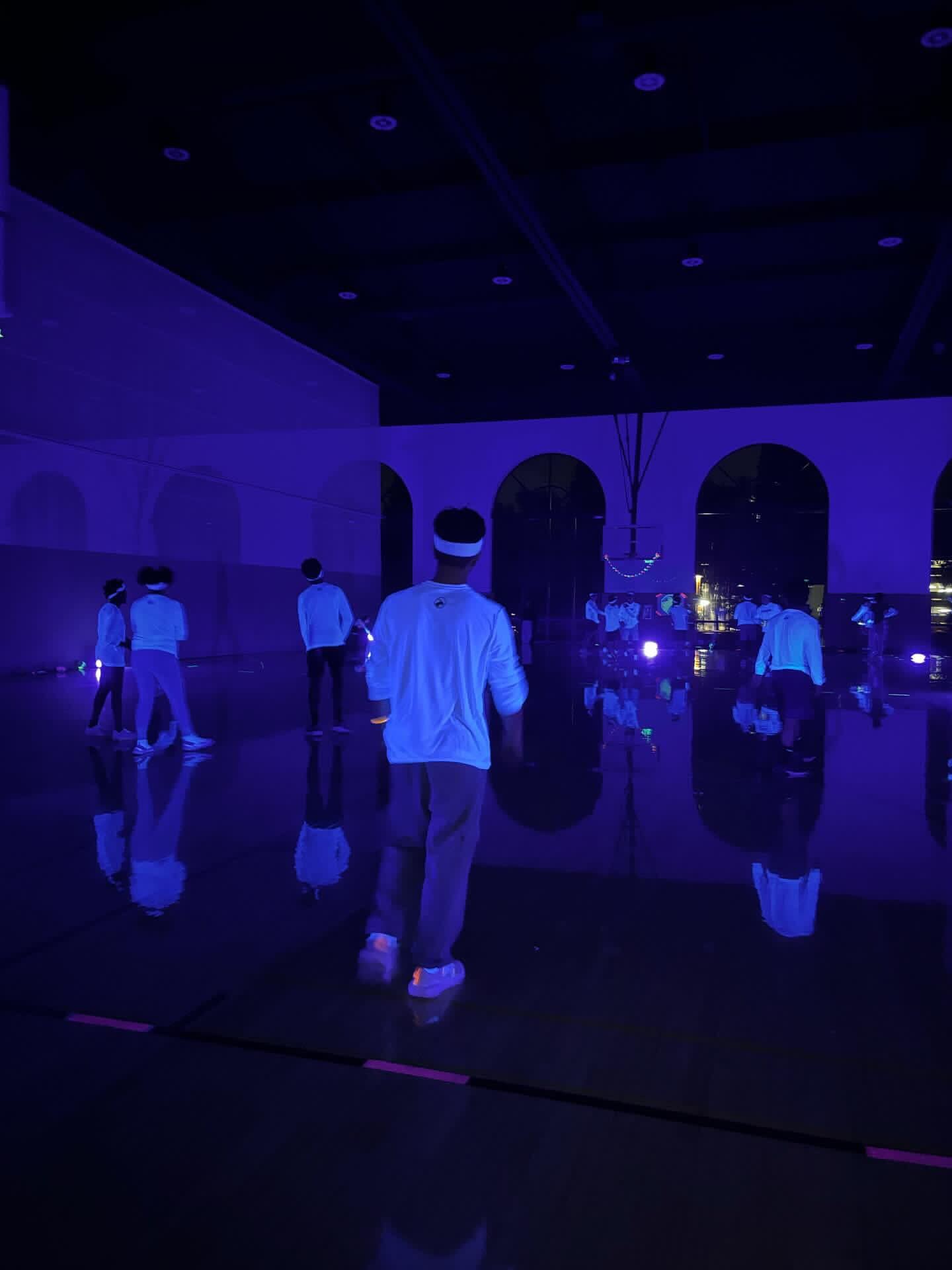Glow-in-the-dark dodgeballs whizzed through the air at Arrillaga Outdoor Education & Recreation Center (AOERC) on Jan. 27, at the first Stanford Farm Games event of the year: cosmic dodgeball.
As a joint venture between Stanford Varsity Athletics, Recreation & Wellness and the Office of Student Affairs, Farm Games aims to foster a feeling of student community and belonging on campus.
The idea is simple: Students are placed in teams based on neighborhoods and compete in recreational athletic competitions like volleyball or pickleball. Many of the events are reminiscent of athletic activities found in middle school recesses or high school physical education classes.
By participating in or winning these events, students earn points that go toward their neighborhood’s overall standing. As of now, that leaderboard places Wisteria in first place with 23,260 points, followed by Redwood and Olive.
The project’s now-iconic goat logo represents the title that each neighborhood is ultimately competing for — the G.O.A.T., or the “Greatest Of All Trees.”
The other aim, and the one that many students seem excited about, is to build a stronger sense of community both within neighborhoods and across campus.
“Farm Games events have really started or strengthened a lot of my friendships,” said Bradley Bush ’27, who was recently recognized by Farm Games for his perfect Xattendance streak. “I’ve met some of my closest friends through these things.”
For many students, these events are opportunities to do something fun with their existing communities. Pachia Xiong ’27 attended the cosmic dodgeball event because her friends had been to previous games and enjoyed them. Similarly, Esaw Adhana ’27 said he and his friends had signed up for the events together.
“We all collectively sign up to do it,” Adhana said. “But then there’s a few people where I’m like, ‘Oh right, you do live here,’ and we bond over it.”
It’s not just the camaraderie that gives Farm Games its spark; the friendly competition between neighborhoods also generates excitement surrounding these events. Adhana expressed his unwavering support for Redwood, while Bush explained that having an outlet and friendly rivalry was vital to his positive experience with Farm Games.
According to Branson, Farm Games has reached 718 students across all eight neighborhoods over the past four months. Branson estimated that around 80% of Farm Games participants are frosh and sophomores. This is likely because of the novelty of the neighborhood system, as well as the fact that frosh and sophomores generally identify with their neighborhood more than their upperclass counterparts, she said.
For coordinators, the hope is that many of those frosh continue to stay involved as they progress in their undergraduate journey.
“As of right now, it’s really easy for me to say that I plan on continuing for the rest of my Stanford career,” Bush said. “It seems like one of those organizations that I would love to make time for in the coming years.”
Interestingly, the Olive team is mostly composed of sophomores and upperclass students. Daniela Flores ’26 explained that she and her friends led an effort to recruit students from FloMo and build the Olive team.
Flores said most of those students are also involved in another athletic program, whether an intramural, club or varsity sport.
“Lots of people are picking the events they go to based on sports that they either like to play or are good at,” Bush said.
According to Flores, Farm Games offers more room to meet new people because the teams are always expanding or shifting around. “I’ve met some people through intramurals … but for most cases, you build a team of people and that team stays consistent over however long you’re here at Stanford,” she said.
In contrast, the Farm Games teams are constantly fluctuating and can extend throughout an entire neighborhood.
With further modifications to the neighborhood system underway, the future of Farm Games is not set in stone. Branson said adjusting to the coming changes “will definitely be a challenge, but Farm Games is so new that it will be easy to adapt.”
She added that she hopes to bring Farm Games to all students, regardless of athletic capability, and also plans to incorporate non-athletic competitions into future iterations of Farm Games.
“The dream would be to welcome everybody and not just do athletic events, but do things like puzzles or maybe trivia,” she said.
Regardless of what Farm Games look like in the future, she hopes to continue creating spaces for Stanford’s undergraduate community to come together.
“Everybody at Stanford is looking for community,” Branson said. “That’s what Farm Games is about. So if we can do that — regardless of what the neighborhood is called — then I think it’s a success.”
